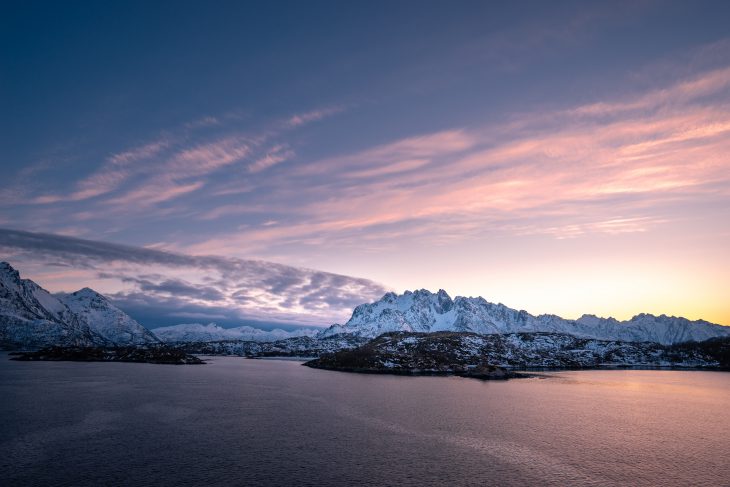The Arctic is warming at a rate of three times the rest of the globe, and the ice floating in its sea is melting. Sea-ice can act like a mirror and reflect away some of the Sun’s energy. So, when temperatures increase and sea-ice melts, more sunlight can be absorbed, heating things up more. While this creates a vicious cycle, sea-ice isn’t the only way sunlight is reflected away from the Earth.
Clouds also reflect away sunlight. As they form around random chemicals and particles suspended in the atmosphere, clouds create a cooling blanket that can keep temperatures low. Research in the past several decades has shown that floating, or aerosolized, microorganisms and the molecules they release play a large part in the formation of clouds. These molecules are known as bioaerosols and can act as a starting point for clouds. While this process is understood in temperate climates, only a few studies have looked at the bioaerosols of the Arctic and if they could help slow sea-ice melting.
A research team from Denmark set out to track the seasonal changes in the community of microorganisms in the atmosphere and terrestrial snow of the Arctic to learn more about bioaerosols and cloud formation. The team collected samples of microorganisms from the air with a sophisticated vacuum outfitted with a filter to collect cells. As for the snow samples, the team simply scooped up freshly fallen snow into bags and let it melt at room temperature. Both of these samples were quickly submerged in a preservative to protect the cells’ DNA and RNA.
To identify what microorganisms were caught, the team sequenced a special gene called 16S rDNA. The 16S rDNA gene is a universal part of bacteria and can allow for the “fingerprinting” of a species. In this way, the team could compare different samples to see if a bacterial species was present or absent and whether it was actively growing or not.
The team found only a few different types of microorganisms in their samples. Of those who were present, there were only a handful of cells of each type. Fortunately, the team expected to find such low quantities in an otherwise pristine, untouched environment like the Arctic.
Samples taken throughout the year had seasonal changes in the microbes that were present, similar to what has been studied in cold, mountainous environments around the world. The team proposed that a group of large air currents called the polar dome could be responsible for changes in the atmospheric microbes. When the polar dome contracts in the summer, less bioaerosols are able to blow into the Arctic. This allows for different microorganisms to survive and dominate the Arctic atmosphere during different times of the year.
A group of bacteria called cyanobacteria dominated the snow samples in both seasons, and only trace amounts of others were found, and were likely dormant. In contrast, cyanobacteria were uncommon in the air. Instead, bacterial groups called Pseudomonadales and Burkholderiales dominated, but only in the spring. During the summer, the air samples contained a relatively even mixture of Arctic bacterial groups common to the region.
During the team’s sampling, a large snowstorm occurred and effectively washed out all microorganisms from the atmosphere. For four weeks the atmosphere community was undetectable until members of the snow community began to be aerosolized once again. This gave the team an opportunity to verify that local microbes in the snow are often the only source for bioaerosols during the summer.
From this study, the team proposed that changes in global air currents can have major effects on bioaerosols in the Arctic and note that members of a few bacterial groups are the key members of these bioaerosols. This knowledge can help us understand cloud formation in the arctic and may be of use in efforts to slow sea ice melt. The team hopes that longer experiments with deeper chemical analyses can further our understanding of cloud formation processes in the Arctic and of the microorganisms who live there.


